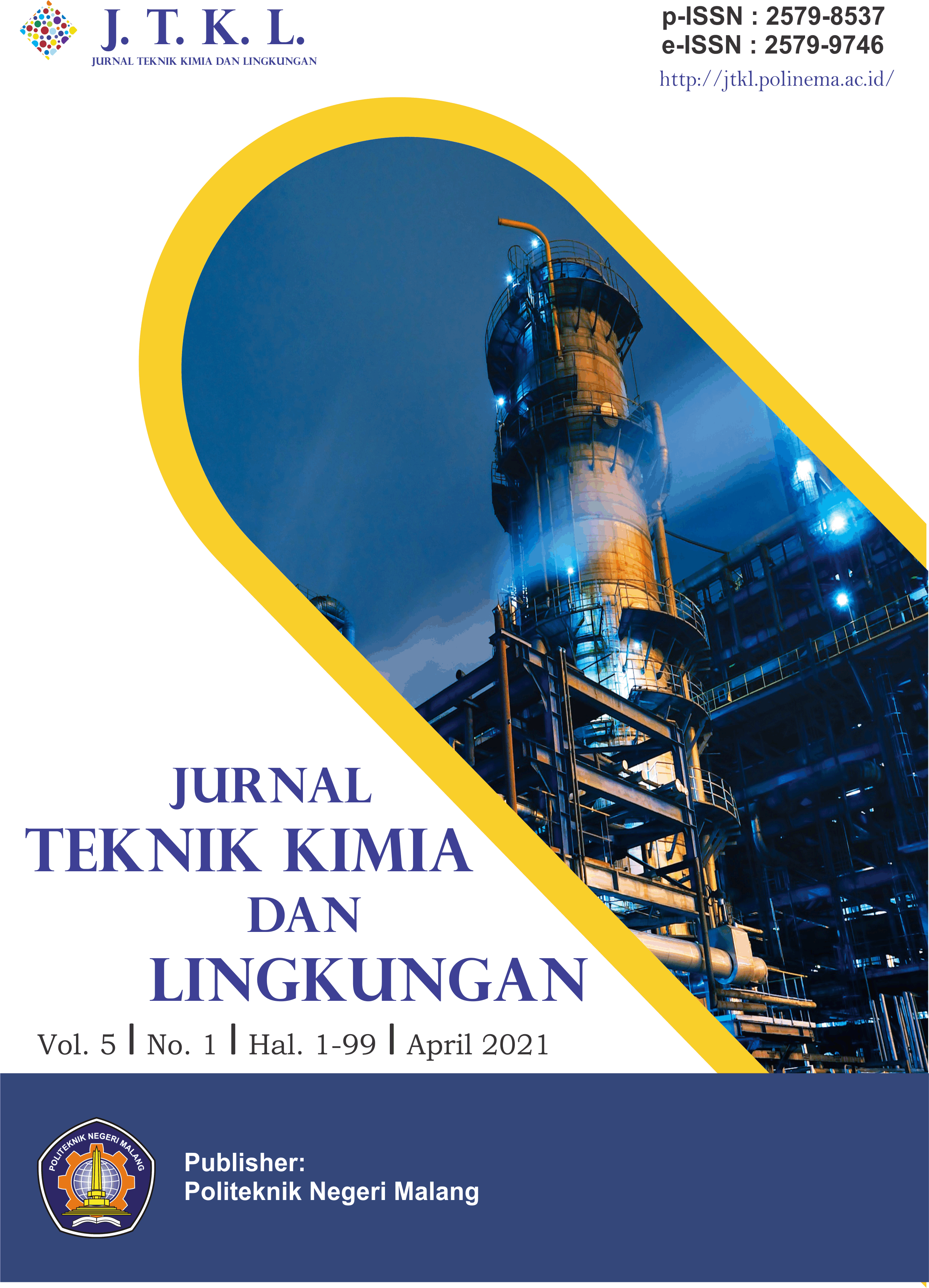Encapsulation of Clove Oil within Ca-Alginate-Gelatine Complex: Effect of Process Variables on Encapsulation Efficiency
DOI:
https://doi.org/10.33795/jtkl.v5i1.214Keywords:
encapsulation, clove oil, Ca-Alginate-Gelatine, macrocapsules.Abstract
Owing to the properties such as analgesic, clove oil is commonly used as medicine, antibacterial, antioxidant, and antimicrobial drugs. The possibility of clove oil encapsulation as a solid macrocapsule was studied by making Ca-Alginate-Gelatine macrocapsules. The process variables used were variations in Alginate concentration of 1% and 1.5% w/v, and the mass ratio between alginate-gelatine was varied between 1: 4, 1: 6, and 1: 8 w/w. In addition, variations in the concentration of CaCl2 (10%, 20% and 30% w/v) as a cross-linking agent for the formation of Ca-Alginate complexes were also used as process variables. The increase of alginate, gelatine and CaCl2 concentration seems to decreased the encapsulation efficiency because of the limitation of the free space volume formed in the Ca-Alginate-Gelatine matrix. The highest encapsulation efficiency (93.08%) was obtained in the use of Alginate 1% w/v, with a ratio of alginate to gelatine 1: 4 and cross-linking in a 10% w/v CaCl2 solution for 15 minutes.
References
E.S. Chan, B.B. Lee, P. Ravindra, D. Poncelet, Prediction models for shape and size of ca-alginate macrobeads produced through extrusion–dripping method, J Colloid Interface Sci., vol. 338, no. 1, pp. 63-72, 2009.
S. Drusch, S. Berg, Extractable oil in microcapsules prepared by spray-drying: Localisation, determination and impact on oxidative stability, Food Chem. vol. 109, no. 1, pp. 17-24, 2008.
L.H. Tan, L.W. Chan, P.W.S. Heng, Effect of oil loading on microspheres produced by spray drying, J Microencapsul. vol. 22, no. 3, pp. 253-259, 2005.
L.H. Tan, L.W. Chan, P.W.S. Heng, Alginate/starch composites as wall material to achieve microencapsulation with high oil loading, J Microencapsul. vol. 26, no. 3, pp. 263-271, 2009.
C. Peniche ,I. Howland, O. Carrillo, C. Zaldı́var, M. W Argüelles, Formation and stability of shark liver oil loaded chitosan/calcium alginate capsules, Food Hydrocoll. vol. 18, no. 5, pp. 865-871, 2004.
E. Chan, Preparation of Ca-alginate beads containing high oil content : Influence of process variables on encapsulation efficiency and bead properties, Carbohydr Polym. vol. 84, no. 4, pp. 1267-1275, 2011.
E. A. Soliman, A.Y. El-moghazy, M.S.M. El-din, M.A. Massoud, Microencapsulation of Essential Oils within Alginate : Formulation and in Vitro Evaluation of Antifungal Activity, J Encapsulation Adsorpt Sci. vol. 3, pp. 48-55, 2013.
S. Kegley, E. Conlisk, M. Moses, Clove Oil (Eugenol) in Marin Municipal Water District: Herbicide Risk Assessment Ch. 6. California: Pesticide Research Institute, 2010.
N. Purwanti, A.S. Zehn, E.D. Pusfitasari, N. Khalid, E.Y Febrianto, S.S. Mardjan, A. Andreas, I. Kobayashi, Emulsion stability of clove oil in chitosan and sodium alginate matrix, Int J Food Prop. vol. 21, no. 1, pp. 566-582, 2018.
S.B. Sevda, L. Rodrigues, The making of pomegranate wine using yeast immobilized on sodium alginate, African J Food Sci. vol. 5, no. 5, pp. 299-304, 2011.
A. Roy, J. Bajpai, A.K. Bajpai, Development of calcium alginate-gelatin based microspheres for controlled release of endosulfan as a model pesticide Development of calcium alginate – gelatin based microspheres for controlled release of endosulfan as a model pesticide, Indian J Chem Technol. vol. 16, pp. 388-395, 2009.
Downloads
Published
Issue
Section
License
Copyright (c) 2023 Agung Ari Wibowo1, Ade Sonya Suryandari, Eko Naryono, Vania Mitha Pratiwi, Muhammad Suharto, Naila Adiba

This work is licensed under a Creative Commons Attribution-NonCommercial 4.0 International License.







